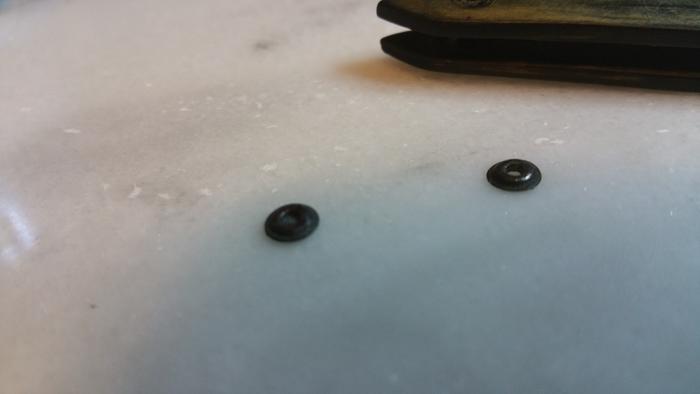Results 1 to 10 of 11
Thread: Original Washers?
Threaded View
-
08-18-2017, 12:09 AM #1
 Original Washers?
Original Washers?

I don't think so but I figured I ask the group that has more knowledge than me.
I drilled out the pivot pin on this Marsh Brothers razor as it had some rust in the pivot area I couldn't get to very well. Here are the washers from the peening. They had a filler washer inside to keep them from flattening too. They look like pressed washers to me. But maybe that's how they did it back then?
So, Originals from 1850 thru 1890?
The wood scales are suspect on being original too as all the pics I find of these razors in this dating don't look like wood.It's just Sharpening, right?
Jerry...


 13Likes
13Likes LinkBack URL
LinkBack URL About LinkBacks
About LinkBacks








 Reply With Quote
Reply With Quote